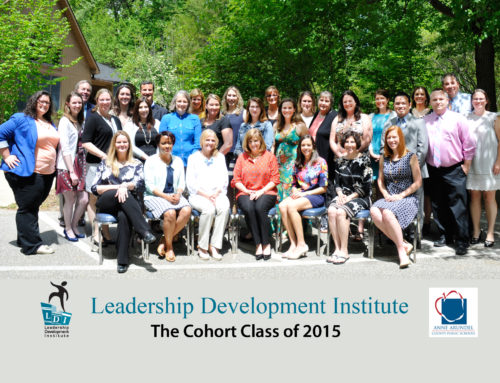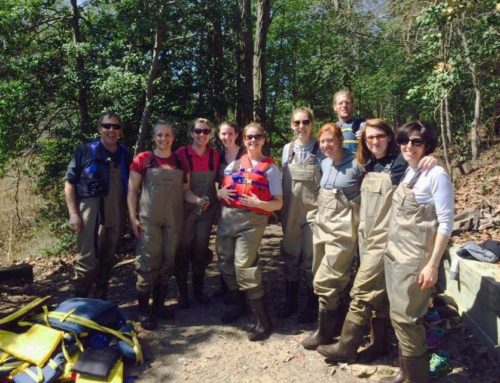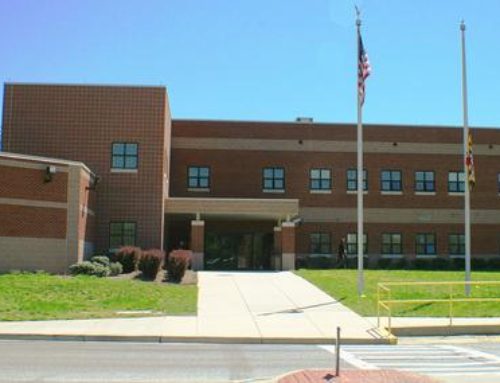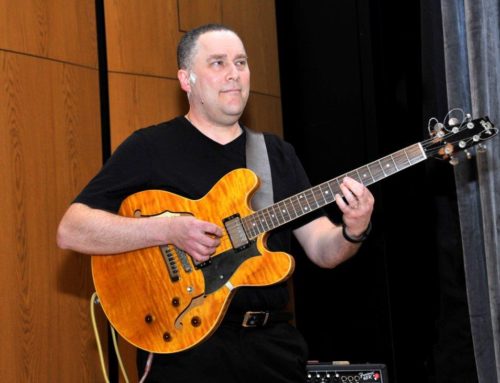Exploring the connections between AACPS, their students, and family support
January 9 & 10, 2015
Throughout our time in LDI, we have been reminded again and again that we don’t know what we don’t know. Each person comes to LDI, the school system, and life in general with their own background, point of view, and individual set of experiences. While this unique perspective is powerful, it can be difficult to remember to step outside of this perspective and see where we stand in a much larger picture. This month we were asked to do just that and in the process, I was forced to consider how little I understand about the community that I live in. With help from the United Way of Central Maryland, we were given the opportunity to “Walk a Mile” in the shoes of a family living in poverty. For me, the result was the most powerful experience so far in LDI and, quite possibly, my time in AACPS.
Walk A Mile with United Way
On Friday, we had the opportunity to continue working on our LDI projects. While important to our journey through LDI, I want to jump right into Saturday’s session with the United Way of Central Maryland (if you are interested in reading about the LDI project, check out next month’s blog where I promise to finally give a good overview of this aspect of LDI). Led by Liz Crammond, Senior Manager of Special Initiatives, we were shown the harsh reality of poverty in this area. Maryland is the 6th most expensive state in the country for rental housing and according to the National Low Income Housing Coalition, the number of full-time, minimum wage jobs necessary to afford a 2-bedroom apartment is 3.4. In 2009, people were refused shelter in Maryland more than 32,000 times because of lack of space or funds. Across Central Maryland, over 300,000 residents are deemed to be food insecure, meaning they lack access to nutritious and safe food (Feeding America). For many in our class, especially those who work in high need schools around the county, these statistics were unsurprising. But while hearing statistics is meaningful, it does not compare to being asked to place ourselves in the context of poverty for the morning.
On Saturday we participated in United Way’s Walk A Mile Experience. In this activity, we were assigned a family role, given resources, and asked to fill these roles for a model “week.” As we were told at the beginning: “The reasons that families live in poverty are diverse and complex. The support network that is there to help them get out of poverty is also diverse, complex and, at times, disconnected. We do not seek to recreate the experience of poverty with this experience…We seek to provide and experience that will raise more questions and continue the dialogue about how to support people who find themselves below the poverty line” (United Way).

A “Week” in Their Shoes
Our class was split into seven families where each person was assigned a role within that family—father, grandmother, cousin, daughter, etc. Each character was given a background based on the situation of a real family who had worked with United Way. I was with Lacey (Mom) and Pat (13 year old son) as the 16-year old son. Our family immigrated to the United States five years ago but had to move apartments frequently because we could not pay the rent. Our mother, who did not speak English, worked two jobs and relied on Pat and I to interpret. As the oldest child, I helped translate the bills and was responsible for getting Pat and myself to school and for picking up my baby brother (played by a doll) from child care. We had an expected weekly income of $332 and were looking at $1,500 in bills due by the end of the week. Across the room, other families worried about pregnant teenagers, parents who were out of work because of disability, and multigenerational families supported by one income.
Within the scope of the activity, we were asked to fill these roles for five, 15-minute “days.” There were tables set up around the room representing everyday destinations—school, work, grocery store, the bank—as well as support agencies—community organizations, government agencies, and offices for non-profits like United Way. For just over an hour, we glimpsed the unbelievable hardships that families in our county face every day. We searched for third-shift jobs, struggled to find transportation, ran late to work because of the line at the bank, and calculated how to get the most food for the least amount of money.
Throughout the activity, it shocked me how hard it was to ever get ahead. Around the room, there were a lot of resources available–from government assistance programs to food banks to informational services like 2-1-1 (a call-center from United Way that offers information and referral services for people who need help finding food, shelter, health care, and other vital services). But getting to these resources took time and that was a commodity we did not have. We spent one day applying for help paying our heat, but because of that we couldn’t get to the bank before it closed and so missed paying other bills on time. I could not have gone earlier to get the assistance because I had already spent one day finding a job and another looking for more affordable child care services. Every day was spent completely in the moment—what do I have to do right now to make it through today? There were always bills due tomorrow, but tonight we needed to figure out how to feed four people on less than $10.
The feeling that stood out to me most was the constant, overwhelming feeling of stress. As the oldest child who spoke English, I took on a big role in getting groceries and paying the bills. Every minute I thought about how to get additional money to help support my family. Every moment that I spent sitting still felt like a wasted moment where I should have been helping my family. I was supposed to be a child but I saw extremely clearly every struggle that my family was facing. By “Saturday,” I had dropped out of school, picked up an under the table job, and went past due on all of our family bills.
Bringing it Back to AACPS
In Central Maryland, 30.4% of people served in shelters are youth under the age of 17 (Department of Human Resources Annual Report on Homelessness) and over 100,000 children are food insecure (Feeding America). As educators, it is our responsibility to recognize the needs of all of our students. It is easy to say that we expect our students to come to school with their supplies, ready to be present in each class and ready to learn. But in AACPS, 33% of students qualify for Free and Reduced Meals and for many students, their last meal was school lunch the day before. And when every dollar counts, the cost of a set of binders might have to come out of the gas money needed to get a parent to his or her job. As if that was not enough of a burden, many children see how much their family struggles. Every day they witness their parents/grandparents/older siblings trying to make ends meet to keep a roof over their head. Carla, who played a 15 year old daughter in the activity, was overwhelmed with a feeling of helplessness as she saw her parents struggle but, in her parent’s effort to protect her, was not given any way to help. For others, they themselves are the ones responsible for holding the house together. Yet in school we ask these children to be as prepared and as focused as the students whose families live comfortably.
As we debriefed, we also thought about the incredible demands poverty places on parents and guardians. We see parents skip school events, ignore phone calls, and miss meetings and it is easy to write them off as disengaged, that for that family, education is not a priority. But we have absolutely no right to make that assumption. In our family, Lacey worked two jobs from 8:00am to midnight. If she was late, she was in danger of having her pay reduced, which already could not support three kids. Even without the language barrier, when would she have had time to meet with a teacher? For many, simply getting to the school is equally challenging. As Barbara said, each person knows how much their own time is worth, but we may have no idea how much that time is worth to someone else. To some, that time spent coming to the school could be the difference in making enough money at work to buy dinner that night.
So what do we do to help? What can we do to help? As promised at the beginning of the day, the activity forced us to look at poverty from a different perspective and sparked an incredibly thoughtful dialogue. In the weeks since this experience, I have thought of the Walk A Mile activity constantly. In my job, I have thought about how to make community events accessible to more families; how to make sure that the information that I am sharing through the website can reach those families who do not have a computer, let alone internet; and most of all, how can I approach every interaction with a parent or child or even another employee remembering that I do not know their personal situation. It may not be my place to ask, but it is my responsibility to recognize that I do not know where they come from and can never assume that I understand their life; in short, to remember that I don’t know what I don’t know.
What I can do, however, is become a resource—be knowledgeable about opportunities available in the school and in the community, ready to offer resources when needed, and become an advocate for creating more opportunities to help all students and their families. This is a drop in the bucket and a tiny step towards the solution. But it is a step nonetheless.






